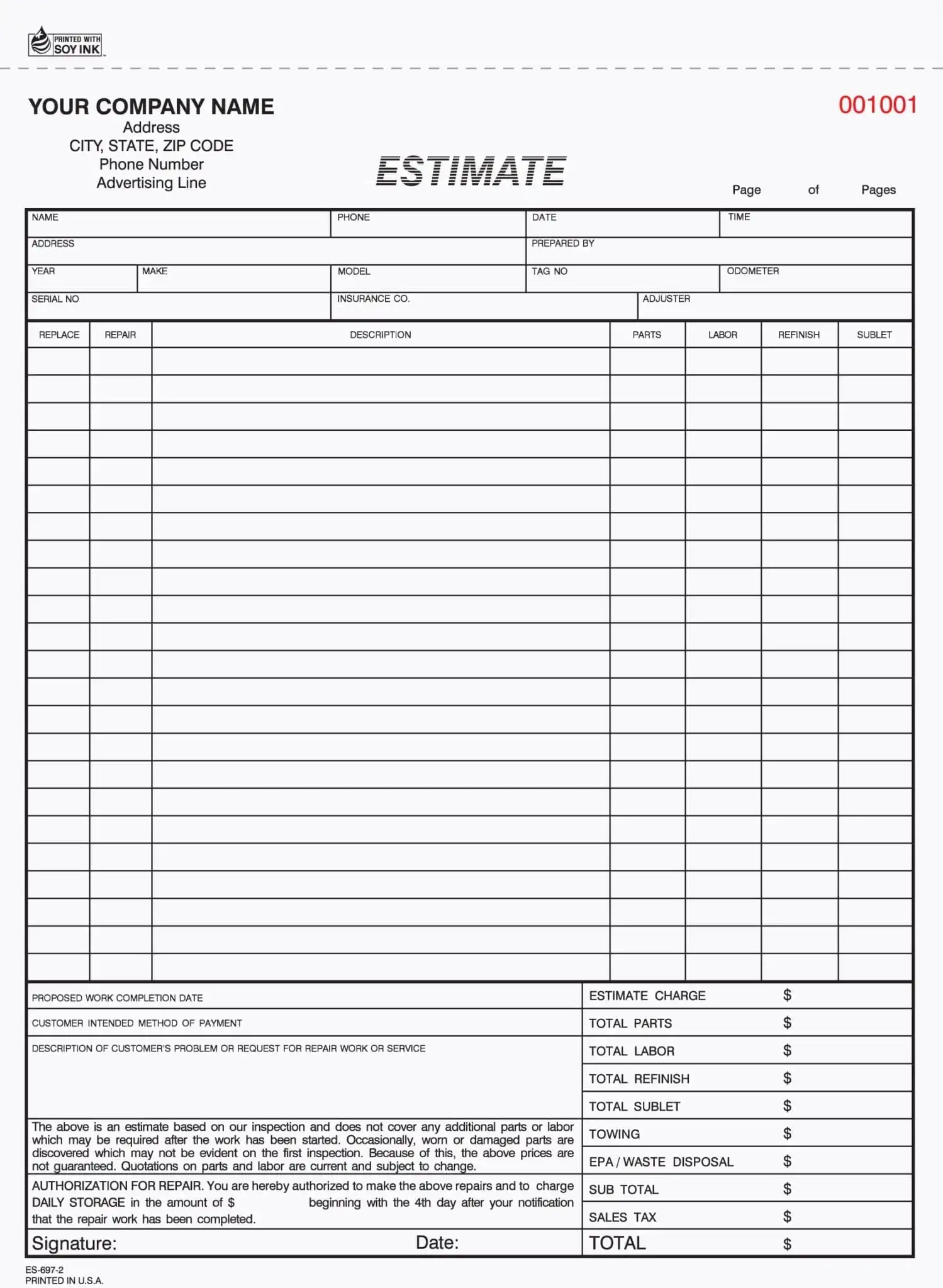
When your car breaks down or needs repairs, it’s important to have an idea of how much those repairs will cost. That’s where a car repair estimate comes in handy. This document provides an estimate of the costs involved in fixing your vehicle, so you can make informed decisions about whether to proceed with the repairs and how to budget for them. In this article, we will discuss what a car repair estimate is, why you need one, what to include in it, how to write one, and the mistakes to avoid. So, let’s dive in!
What Is a Car Repair Estimate?
A car repair estimate is a document that outlines the estimated costs of repairing a vehicle. It provides a breakdown of the parts, labor, and any additional charges that may be incurred during the repair process. This estimate is typically provided by a mechanic or an auto repair shop after they have assessed the damage or diagnosed the issues with the car. It helps the vehicle owner understand the potential expenses involved in getting their car back on the road.
Why Do You Need a Car Repair Estimate?
Getting a car repair estimate is essential for several reasons:
- Budgeting: A car repair estimate allows you to plan and budget for the repair costs. It gives you an idea of how much money you need to set aside or whether you can afford the repairs at the moment.
- Comparison: Having multiple estimates allows you to compare prices and services offered by different auto repair shops. This can help you make an informed decision and choose the best option that suits your needs and budget.
- Negotiation: If you have an estimate from one shop, you can use it as leverage to negotiate with another shop for a better price. This can potentially save you money on the repairs.
- Insurance Claims: In some cases, you may need to provide a car repair estimate to your insurance company to file a claim. This estimate helps the insurance adjuster assess the damages and determine the coverage you are entitled to.
What to Include in a Car Repair Estimate
A well-written car repair estimate should include the following information:
- Vehicle Information: This includes the make, model, year, and VIN (Vehicle Identification Number) of the car being repaired. It helps identify the specific vehicle and ensures accuracy in the estimate.
- Repair Details: Provide a detailed description of the repairs needed, including the diagnosis of the problem and the recommended solutions. Be specific about the parts that need to be replaced or repaired.
- Cost Breakdown: Break down the estimated costs into categories such as labor, parts, taxes, and any additional fees. This helps the vehicle owner understand where their money is going.
- Timeline: Include an estimated timeline for the repairs, including the start date and the expected completion date. This gives the owner an idea of how long they will be without their vehicle.
- Payment Terms: Clearly state the payment terms, including whether a deposit is required, accepted payment methods, and any financing options available.
How to Write a Car Repair Estimate
Writing a car repair estimate requires attention to detail and clear communication. Here are some steps to follow:
- Inspect the Vehicle: Thoroughly inspect the vehicle to identify all the repairs needed. Take notes and pictures to document the damages or issues.
- Research Parts and Labor Costs: Research the cost of parts and the standard labor rates in your area. This will help you provide accurate estimates.
- Break Down the Costs: Provide a detailed breakdown of the estimated costs, including labor, parts, taxes, and any additional charges. Be transparent and avoid hidden fees.
- Use Clear and Concise Language: Write the estimate using simple and easy-to-understand language. Avoid technical jargon that may confuse the vehicle owner.
- Be Realistic: Provide realistic timelines for the repairs and set realistic expectations to avoid disappointing the vehicle owner.
- Review and Proofread: Double-check the estimate for any errors or omissions. Proofread the document to ensure it is clear, professional, and error-free.
Mistakes to Avoid
- Not Being Specific: Avoid vague descriptions of the repairs needed. Be as specific as possible about the parts, labor, and costs involved.
- Omitting Additional Charges: Make sure to include any additional charges such as disposal fees, diagnostic fees, or taxes to provide an accurate estimate.
- Overpromising: Avoid promising unrealistic timelines or outcomes. Be honest and transparent about the repairs and the time it will take to complete them.
- Excluding Payment Terms: Clearly state the payment terms, including any deposits required and accepted payment methods, to avoid confusion or disputes later on.
- Skipping Proofreading: Always proofread the estimate before handing it to the customer. Typos or errors can undermine your professionalism and credibility.
- Not Explaining the Estimate: Take the time to explain the estimate to the customer, addressing any questions or concerns they may have. This builds trust and ensures a smooth process.
In conclusion, a car repair estimate is a valuable tool for both vehicle owners and auto repair shops. It helps the owner plan and budget for repairs, compare prices, negotiate, and file insurance claims. When writing a car repair estimate, include detailed information about the repairs, break down the costs, provide realistic timelines, and be transparent about payment terms. By avoiding common mistakes and maintaining clear communication, you can ensure a positive experience for both the customer and the mechanic.
Download: Car Repair Estimate Template